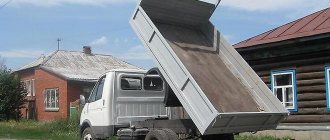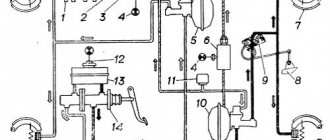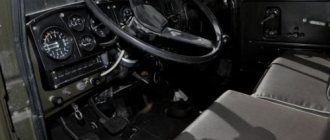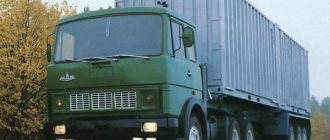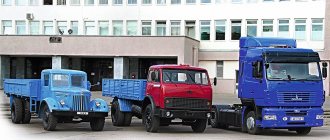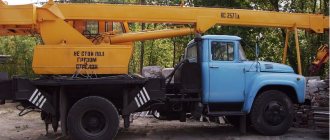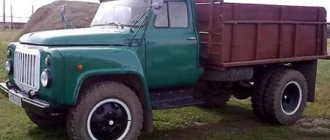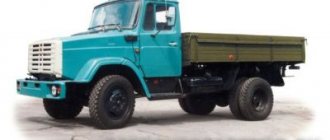What kind of engine is 451 on the UAZ?
In 1961, prices decreased by 10 times. All funds, prices and tariffs were recalculated in the ratio of 1 ruble with new money for 10 rubles with old money. New banknotes from 1 to 100 rubles and coins of a new type were released into circulation. The old coins of 1, 2 and 3 kopecks were left in circulation at face value. The exchange took place over three months: from January 1 to April 1, 1961. After the reform of 1961, new types of coins were introduced, among which 1 ruble became the largest denomination. It was put into circulation and minted from a copper-nickel alloy until 1991, when the Bank of the USSR last issued coins of a new design, where the place of the coat of arms was taken by images of the Senate dome and the Spasskaya Tower of the Moscow Kremlin. In 1960, a monetary reform was carried out in the Soviet Union, although at that time there was sufficient economic stability in the country. It was decided to change the price scale from January 1, 1961, i.e. actual denomination of the ruble. Banknotes in circulation were exchanged for new ones in a ratio of 10:1. At the same time, prices for goods, all types of income, payment obligations, contracts, etc. were also reduced by 10 times. This led to a reduction in all prices in state stores ten times compared to the previous level. One of the goals of the reform was to attack the black market. Soviet leaders believed that shadow economy traders who had accumulated large sums of money would not be able to exchange their accumulations of old banknotes for new ones. The exchange of banknotes was carried out from January 1 to April 1, 1961 without any restrictions. With the change in the price scale, the gold content of the ruble also changed; it was set at 0.987412 g of pure gold. There were no changes to the then existing monetary system until July 1993. The new money was smaller and more convenient than the old ones. Compared to the paper money of 1947, the new notes were very small. There are two legends that explain this sudden change in size. According to the first of them, when the sketches were brought to Khrushchev for consideration, he grabbed scissors and cut the future money with his own hands. The second version connects the changes with the fact that the State Bank at that time purchased money counting machines abroad. However, the technology was designed for small banknotes that were in circulation in Europe. Therefore, Soviet banknotes had to be urgently “reduced.” Model No. 50 from Russia.
magazine series DeAgostini “Car in service”. Special paint. Arrived in the collection on July 14, 2013. The category of rear-wheel drive cars of the 451st family of the Ulyanovsk Automobile Plant is replenished with this excellent model of a furniture van. It emanates the spirit of the sixties of the last century, when the country was entering an era of prosperity and the majority of Soviet citizens could already take care of the full arrangement of their lives, including in the matter of furnishing their apartments. The color of the model with the signature pattern from Mostransagentstvo on the cargo booth looks very realistic, not flashy, utilitarian, and quite fitting into the color scheme of Soviet automobile factories of those years. Unfortunately, the inscription on the sides, “Delivery of goods to the population,” let us down. In those life-affirming years, the Times New Roman font in which it was executed had not yet been heard of. The drawback, although insignificant, affects the perception of the model as a whole. I was pleased with the geometry of the cabin. In my opinion, compared to the previous UAZ 450s from DeAgostini, it was brought to perfection. The bottom of the truck is made to fit four. The driveshaft, surprisingly, breaks without reaching the gearbox. However, otherwise there seem to be no complaints. There is even a spare wheel available. I would also like to note the soft material of the van’s wheel tires, which reminded me of the good old Saratov models of the early period. Objectively, the model deserves high praise. UAZ-451D is a rear-wheel drive cargo vehicle (4x2 wheel arrangement) produced at the UAZ plant. The basis for this truck was the basic rear-wheel drive serial van UAZ-451. The car had the same two-seater cabin over the engine as the base model, but instead of a van interior, a wooden cargo platform with three folding sides was installed. Serial production of this modification was launched at the Ulyanovsk Automobile Plant in 1961-1966.
Modifications:
UAZ-451A - ambulance vehicle UAZ-451M (since 1965) new engines and transmission, the design of the front part has been changed (“nostrils” have been replaced by a radiator grille, which has survived to this day). Created on the basis of the UAZ-451DM with a side hinged door. Load capacity - 1 ton. Series since 1966 UAZ-451MI - Electric car 1977. UAZ-451DM is a truck with a double cab and a wooden body. UAZ-451D is a truck with a wooden platform with three opening sides. Series in 1961-66 UAZ-451S - an experimental snowmobile with removable skis and rubber-metal tracks. The LuMZ-946 refrigerator car was produced by the Lutsk Machine-Building Plant on the basis of the UAZ-451
Model No. 106 from Russia. magazine series DeAgostini “Autolegends of CCC R”. Khaki. Arrived in the collection on 02/28/2013. On the last winter day, the collection is replenished with an interesting model of the Ulyanovsk van of the 451st family. The model makes a good impression. The protective army color characteristic of “loaves”, bumpers painted in body color, silver-plated headlight frames, neatly executed sidelights and rear lighting, spare wheel, towbar, marked door handles, etc., all this together produced a quite passable large-scale copy of the Soviet car-hard worker. There is, however, one serious drawback, without which this UAZ would undoubtedly score five points - an incorrect imitation of the stampings on the rear false windows of the van. Unfortunately, they are designed to not extend onto the rear of the UAZ, i.e. performed after 85, when the entire family of Ulyanovsk “loaves” underwent modernization. It is also worth noting the oversized bird emblem on the front. For what reasons this was done is not clear. The headlights were enlarged, but this, it seems to me, in combination with updated frames, refreshed the model and added realism. There is a question about the front ventilation grilles on the body of the UAZ, which are not available on the model, but this problem is still under discussion on some collection forums. There is an opinion that the early UAZ-451 did not have a grille. Due to the inaccuracy with the rear stampings, I give the model a C grade and am looking forward to the furniture van model - UAZ-451D, which will complement the theme of this rear-wheel drive UAZ family.
Since 1960, based on the UAZ-450 4x4 vehicles, rear-wheel drive vehicles have been produced: the UAZ-451D flatbed vehicle, the UAZ-451 van and the UAZ-451A ambulance. In 1966, the entire family was modernized - the cars received a more powerful overhead valve UAZ-451 engine, a four-speed gearbox, and the external design of the driver's cabin was also changed. As a result, the entire family of all-wheel drive vehicles was assigned the UAZ-452 index (see page 3).
Based on the all-wheel drive family, vehicles with a 4x2 wheel arrangement were produced: UAZ-451M and UAZ-451DM - a van and an onboard vehicle, respectively.
The UAZ-451M vehicle is a van designed for transporting industrial and food products. The body is carriage type, all-metal, divided by a partition into the driver's cabin and the cargo compartment. Goods can be loaded through the side (right side) and rear double doors.
Motor device
The design features of the motor differ slightly from the UMZ-451. The units and parts have the same location. Let's look at the motor design:
1 - flywheel; 2 — mounting eye; 3 — heater valve; 4 — cylinder head cover; 5 — inlet pipeline; 6 — nuts of studs securing the cylinder head; 7 — valve rocker arm; 8 — rocker axis; 9 — crankcase ventilation pipe; 10 — cylinder head; 11 — valve springs; 12 — oil deflector cap; 13 — valve sleeve; 14 — oil filler cap; 15 - valve; 16 — cylinder head gasket; 17 — coolant pump; 18 — rod; 19 — pusher; 20 — fan pulley; 21 - camshaft; 22 — driven gear of the camshaft drive; 23 — torsional vibration damper; 24 — pulley hub; 25 - pulley; 26 — pulley bolt; 27 - cuff; 28 — drive gear of the camshaft drive; 29 - crankshaft; 30 — oil pan; 31 — cylinder liner; 32 - piston; 33 — oil drain plug; 34 — connecting rod; 35 — oil intake; 36 — oil pump; 37 — cylinder block; 38 — exhaust manifold; 39 — clutch housing.
Auto-reactor
UAZ history. The legendary SUV "UAZ" - aka "goat"
- home
- About the site “Auto-reactor”
- Site Map
- Partners
- RSS
UAZ history. The legendary SUV "UAZ" - aka "goat"
A replacement for the popular post-war “69th” “goat” on the UAZ e was prepared back in 1964. the UAZ-469 SUV (as they called it back then) with a seven-seater phaeton-type body with removable window frames and a folding top began only at the end of 1972. Rigidly connected all-wheel drive without cross-axle differential locks, optimal weight distribution along the axles, a durable and torsionally rigid spar frame of variable profile with transverse reinforcement, two separate fuel tanks - these are the design features of the UAZ that ensured its popularity for many decades not only in our country country, but also in 80 countries around the world. The car was equipped with a carburetor 72-horsepower UMZ-451 engine, actually a replica of the ZMZ-21 engine.
The main index “469” was given to the military version with shielded electrical equipment and wheel gears that increase the ground clearance by 80 mm. The UAZ-469 was capable of carrying up to seven people and 100 kg of cargo, or two people and 600 kg of cargo with the rear seats removed, as well as towing an 850 kg trailer (usually a single-axle GAZ-704 ). In 1973, a civilian version of the UAZ-469B , equipped with axles without gearboxes and conventional electrical equipment. of the UAZ-469BG was produced in small quantities for transporting a patient on a stretcher. Some of the UAZ vehicles received by the Ministry of Internal Affairs were equipped by this department with a metal roof and a door in the rear side, produced in “special institutions.” The rear compartment of such a patrol car was intended for detainees. The modernization of the UAZ-469 was gradual, but constant. In 1980, instead of lever shock absorbers, modern telescopic shock absorbers appeared. In 1985, the braking system received separate circuits for the front and rear axles, a hydraulic clutch, suspended pedals, modified rear fenders, modern turn indicators, “cargo” tail lights, etc. The modernized versions of the UAZ received the following indices according to GOST: military with gearboxes - UAZ-3151 , civilian with straight axles - UAZ-31512 ; medical - UAZ-3152-01 (the additional index -01 designated vehicles of the intermediate series with some components from the “469th”). Finally, they also thought about safety - active and passive: the steering column became safer, a rear-view mirror with an anti-dazzle device appeared, an electric windshield washer instead of a foot-operated washer, two safety bars built into the awning structure, and an improved electrical circuit with an alarm system. In addition, a more powerful heater and an autonomous pre-heater have appeared.
In 1986, a more powerful UMZ-414 engine appeared, with a cooling system for “Antifreeze” and an expansion tank. The reliability and durability of the chassis has increased. Introduced improved body priming using the dip method. Since 1989, a 90-horsepower UMZ-417 engine was introduced, a vacuum brake booster, and the main gear ratio was increased from 4.625 to 5.125.
UAZs on free sale only in the 90s. The plant needed to adapt the “goat” to the needs of the civilian market, so in 1993 a modification of the UAZ-31514 with a metal top and a lifting rear hatch appeared, and a year later they began installing a one-piece windshield with lower-mounted wipers and a “softer” one. suspension (from the promising model 3160) - spring in front with anti-roll bar, rear - on small leaf springs. Normal lockable door locks appeared, and later gas tank flaps. The interior has been somewhat “ennobled” with floor mats, pockets and armrests on the doors, and a plastic trim on the dashboard. “Soft” seats with fabric upholstery and headrests appeared. The front axle was equipped with axle axle release clutches. UAZ-31519 version was equipped with a more powerful and high-torque UMZ-4218 engine. It has also become the main one for small-scale UAZ-2930 (awning or hardtop) and UAZ-3153 - hardtop, spring suspension, power steering, plastic bumpers, improved equipment for a 9-seater cabin. In 1999, the model range was headed by the UAZ-3159 “Bars” . It was equipped with “wide-gauge” (1600 mm) gear axles, spring front suspension, a new UMZ-409.10 engine with distributed injection, a fine-modular (with one control lever) transfer case, rich interior trim using imported components and a rotating rear door. Most of these innovations were later used on the UAZ-315195 Hunter UAZ-3151 family at the end of 2003 . However, it was produced for several more months for the needs of the army and for export.
UAZ SUVs still remain the best “rogues” in the country. Most of their units can withstand repairs in the field, spare parts are available, but the service mileage is small (no more than 4 thousand km), and repairs are labor-intensive, so the owner of such a car must be familiar with the hardware. The UAZ is actually not suitable for the role of a family car, as it is not comfortable and is power hungry. In short, this is a real man's car for conquerors of domestic off-road terrain. For serious events, such as trials, the chassis needs to be lifted.
Possible problems: Engine:
- Leaky pre-heater system and its unstable operation (until 1985).
- Engine and transmission noise.
- Low service life of UMZ and ZMZ engines (since 2001).
- Failures in the operation of the K-151V carburetor.
Transmission:
- Gearbox and transmission jamming.
- Floor pedals, plus high power manual clutch pedal (until 1985).
- Manifold gaskets burn out.
- Cracking of clutch reservoirs and master cylinder.
- Transfer case failure due to shaft misalignment.
- Wear of bushings and kingpins of the front axle (40 thousand km).
- Absence of a front axle axle release clutch (until 1993).
- Wear of rear axle main gears.
- Gearboxes in axles increase cross-country ability only on rough terrain, but on normal roads they make noise, increase fuel consumption and require frequent maintenance.
Chassis:
- Lack of center differential.
- Rigid spring suspension.
- Dirt getting into the brake master cylinder during inspection due to its inconvenient installation under the floor of the driver's seat (before 1985).
- Ineffective drum brakes.
- “Heavy” steering wheel (without power steering).
- Noise and “wobbiness” of the power steering.
- Many points on the chassis require extrusion.
Electrical equipment:
- Unreliable breaker-distributor and thermostat.
- Rapid wear of alternator belts.
Body:
- Unlockable hood (until 1996).
- Lack of lockable door locks (completely before 1993, partially after 1993).
- Absence of a rear door lock (completely before 1997, sometimes after).
- Lack of anti-theft devices (until 1992).
- Rapid corrosion of the front wheel arches, mudguards, lower rear wings and doors from the inside due to poor water drainage.
- Low quality of painting.
- Corrosion in the area where plastic trims are attached to the wings (since 1994).
- The fragility of the tarpaulin awning.
- Weak heater.
- Inconvenient windows.
- Accumulation of moisture under insulating mats, upholstery and in door pockets.
- Uncomfortable and hard seats without adjustment (all before 1993, after - on request).
- Chips and cracks in the "co-op" plastic top.
- Poor side visibility.
Country of origin: Russia Manufacturer: UAZ OJSC (Ulyanovsk) Body: frame Body type: phaeton/station Number of doors: 4/5 Number of seats: 7 Drive type: plug-in all-wheel drive with range, engine longitudinally in front Suspension design: front and rear dependent spring (since 1994 - spring) Overall dimensions, mm (UAZ-469/31514 and modifications): 4025x1785x1900 Overall dimensions, mm (UAZ-3153): 4514x1785x2000 Overall dimensions, mm (UAZ-3159 "Bars"): 4570x1962x2 100 Wheelbase, mm (UAZ-469/ 31514 and modifications): 2380 Wheelbase, mm (UAZ-3153/ 3159 “Bars”): 2760 Ground clearance, mm: from 220 to 300 mm Luggage compartment volume, l (UAZ-469/ 31514 and modifications): 900/ 2200 Luggage compartment volume, l (UAZ-3153/ 3159 “Bars”): 1750/ 3400 Curb weight, kg: from 1600 to 2000 Transmission: manual, 4- or 5-speed Tires: 215 / 90-15С
Lubrication system
Type of lubrication system combined under pressure and splashing Components and parts with forced supply of lubrication : crankshaft and camshaft bearings, rocker arm bushings and upper rod tips Gear oil pump , 1-section, with a pressure reducing valve in the oil pump cover oil filter , full-flow VAZ- 2101-1012005 Oil sump made of sheet steel, stamped Crankcase ventilation system
What kind of engine is 451 on the UAZ?
The UAZ-452 cars (4X4 type), produced since 1965 by the Ulyanovsk Automobile Plant, are a further development and improvement of the designs of the previously produced UAZ-450 cars.
The UAZ -452 is equipped with a more powerful carburetor overhead valve engine (72 hp), a four-speed gearbox and a reinforced clutch. This made it possible to improve the economic and traction-dynamic performance of cars.
The transfer case, attached directly to the gearbox, made it possible to eliminate the intermediate driveshaft found on UAZ-450 vehicles.
Promotional offers based on your interests:
Four satellites are installed in the differentials of the drive axles, which makes it possible to significantly reduce the specific pressure on the axis of the satellites.
The front drive axle is equipped with a mechanism for disabling the drive of the front wheels.
The steering mechanism is made simpler (without a bevel gear) and more reliable.
Braking efficiency has been increased by installing a separate drive on each pad on the front brakes.
The cabin and body have been made more durable and spacious, with an improved heating and ventilation system (rolling down windows have been installed in the front doors), and a number of other changes have been introduced.
The plant has also been producing UAZ-451M cars (type 4X2) since 1965. They have a number of units, components and parts unified with UAZ-452 cars.
Vehicles of the UAZ -451M family with a rear driven axle (4X2 type) are designed for use on all roads, and the UAZ -452 with two driven axles (4X4 type) are also intended for off-road use.
The UAZ-451M (Fig. 1) with a carrying capacity of 1000 kg and the UAZ-452 (Fig. 2) with a loading capacity of 800 kg with all-metal closed wagon-type van bodies are intended for the transportation of industrial and food products.
Based on the UAZ-451M vehicle, the plant produces UAZ-451DM trucks (Fig. 3), equipped with all-metal cabins and wooden platforms with three folding sides, designed for transporting various small-batch cargo.
The UAZ -452 family of vehicles includes: the UAZ -452A ambulance (Fig. 4), designed for transporting patients and servicing emergency medical centers in cities and rural areas; UAZ -452V bus (Fig. 5), designed to transport 10 passengers; UAZ-452D truck (Fig. 6) for transporting small-batch cargo, having the same cabin and platform as the UAZ-451DM vehicle.
Gas distribution mechanism (GRM)
Camshaft 5-bearing, steel, forged
drive gear driven from the crankshaft by a pair of helical gears
Camshaft bushings rolled from steel strip filled with babbitt
valves are located parallel to the cylinder axis, tulip-shaped, made of heat-resistant steel 40Х9С2. disc diameter 44 mm, seat chamfer angle 45°, valve lift height 9.5 mm exhaust discs made of heat-resistant steel 55Х20Г9АN4 with surfacing of the working surface with EP616A alloy, disc diameter 36 mm, seat chamfer angle 45°, valve lift height 9.5 mm
Valve timing, degrees: opening of the intake valve to TDC. 12 closing the intake valve after i.d. 60 opening of the exhaust valve to b.m.t. 54 closing the exhaust valve after t.m.t. 18
TOP 2 modifications of the Soviet light truck UAZ-451: we describe from all sides
| Other designations | "Loaf", "Tadpole" |
| Manufacturer: | UMP |
| Brand: | UAZ-450 |
| Type: | carburetor |
| Volume: | 2430 cm3 |
| Maximum power: | 62 l. s., at 3800 rpm |
| Maximum torque: | 149 Nm, at 2000 rpm |
| Configuration: | in-line, 4-cylinder. |
| Cylinders: | 4 |
| Valves: | 8 |
| Max. speed: | 90 km/h |
| Fuel consumption combined cycle: | 17.5 l/100 km |
| Cooling: | liquid |
| Cylinder block material: | aluminum |
| Cylinder head material: | aluminum |
| Clock (number of clock cycles): | 4 |
| Cylinder operating order: | 1-2-4-3 |
| Recommended fuel: | A-72 |
| Manufacturer: | UMP |
| Brand: | UMZ-451 |
| Type: | carburetor |
| Volume: | 2445 cm3 |
| Maximum power: | 70-75 l. s., at 4250 rpm |
| Maximum torque: | 198 Nm, at 2500 rpm |
| Configuration: | in-line, 4-cylinder. |
| Cylinders: | 4 |
| Valves: | 16 |
| Max. speed: | 110 km/h |
| Cooling: | liquid |
| Cylinder block material: | cast iron |
| Cylinder head material: | aluminum |
| Clock (number of clock cycles): | 4 |
| Cylinder operating order: | 1-2-4-3 |
| Recommended fuel: | A-76 |
| Full mass | loaded: 1510 kg; full 2660 kg |
| Load capacity | 800 kg 1000 kg |
UAZ-451
- a family of light trucks and vans produced by the Ulyanovsk Automobile Plant named after. V.I. Lenin in the period from 1961 to 1982. The main difference between the UAZ-451 family and the UAZ-450 and UAZ-452 family was the presence of only rear-wheel drive (4X2). These cars were intended mainly for national economic needs.
Encyclopedic YouTube
Repair of UAZ Bukhanka gearbox (removal, repair, installation)
UAZ Bukhanka. Preparing for the hunt. Part 1 awakening.
How to make the UAZ engine more reliable? Engine UMZ-417 2.45, troubleshooting and review
Small van (4X2) UAZ-451M. Autolegends of the USSR
UAZ-451DM truck
, which, in turn, was a modernized version of the rear-wheel drive flatbed truck
UAZ-451D
. The carrying capacity of the modernized vehicles of the 451 family was increased from 800 kg to a ton, thanks to the use of reinforced springs and clutch in the design. In addition, in 1965, a new front panel of the cabin was developed: the narrow horizontal grille between the headlights gave way to a trapezoidal air intake, which gave a recognizable characteristic appearance to UAZ cabover cars.
Rear-wheel drive vans UAZ-451M
They were inferior to the “army” all-wheel drive vehicles of the 452 family only in cross-country ability, while possessing a number of other advantages, and were successfully used for economic transportation in the city and in rural areas. More economical and unpretentious vehicles served schools and kindergartens, pioneer camps and boarding houses, canteens and shops, and transported mail.
crank mechanism
Cylinder block made of cast aluminum alloy with replaceable “wet” cast iron liners
Cylinder head made of cast aluminum alloy, with inserted seats and valve guides, common to all cylinders
The combustion chamber is flat-oval, located in the cylinder head
pistons , made of aluminum alloy, tinned, with steel thermostatic inserts poured into them, tinned
Piston rings: compression rings: 2, cast iron: upper chrome-plated, lower tin-plated oil scraper: 1, steel, composite
Piston pins are steel, hollow, floating, secured with two retaining rings
connecting rods , forged, I-section, with a bronze bushing pressed into the upper head
The crankshaft is cast, cast iron, 5-support, with counterweights. The diameter of the main journals is 64 mm, the connecting rod journals are 58 mm
Main and connecting rod bearings with replaceable thin-walled steel-aluminum liners Thickness, mm: main liner - 2.25; connecting rod bearing - 1.75; anti-friction layer - 0.33
The flywheel is cast, cast iron, with a pressed-on ring gear for starting the engine with a starter
Major versions
The basic carburetor model UMZ 421 had a tuned exhaust system. The system included an exhaust manifold, a muffler, a muffler downpipe and a resonator. However, such a gas exhaust system caused difficulties with the installation of such engines on some production UAZ vehicles, especially with a carriage-type body (“loaf”). These difficulties led to the appearance of modifications with an untuned exhaust system.
In 1998, UMZ entered a new sales market for itself - supplies of engines of the UMZ 4215 model for light-duty trucks of OJSC GAZ began. At the same time, growing requirements for exhaust gas toxicity have led to the equipping of UMP engines with fuel injection systems that control fuel supply and ignition parameters using electronic control units. The first engines with such systems were shipped to customers in 1999-2000 - the engine with the UMZ 4213 index began to be installed on UAZ-3160 vehicles.
To complete UAZ vehicles, a 98-horsepower 4218.10 (with a rating of 7.0 for A80 gasoline) or a 103-horsepower 4218.10-10 (with a rating of 8.2 for A92 gasoline) was supplied. Accordingly, the engines could have different exhaust systems. Also for the needs of UAZ, a 117-horsepower 4213.10-40 with a fuel injection system was produced. For GAZ cars, engines 4213.10-50, 4215.10-10, 4215.10-30 and a 123-horsepower injection 4216.10 were produced.
Basic data for control
Gap between valves and rocker arms, mm for intake and exhaust 0.35-0.40 for exhaust cylinders 1 and 4 0.30-0.40 Oil pressure in the lubrication system at oil temperature in the crankcase +80°C at 2000 rpm 3, 5 kgf/cm2 at 600 rpm not less than 0.5 kgf/cm2 Oil temperature in the crankcase 80-95°С Fluid temperature in the cooling system, degrees 80-90°С Thermostat opening temperature 70°С Gap between breaker contacts, mm 0, 4±0.05 Gap between spark plug electrodes 0.85-1.0 mm Oil consumption due to fuel consumption excluding lubricant changes no more than 0.5%
Description
By 1996, a new model engine with a cylinder capacity of 2890 cc was developed and put into mass production, which met the new requirements. The project was called UMZ 421. In fact, UMZ 421 became the latest version of the GAZ 21 engine, which went into production in 1957. Thanks to the increased working volume, enlarged exhaust valves (the diameter increased by 3 mm - up to 39 mm) and a number of other improvements, it was possible to increase torque to 22.6 kgf/m and power to 125 hp. (previous models had a torque of no more than 17 kgf/m and a power of no more than 80-90 hp).
Within the framework of the UMZ 421 project, there were several dozen engines that differed from each other in compression ratio, power system, attachments, type of drive of attachments and other components. The lubrication system for all motors is combined, from a gear pump. A change requires about 6 liters of oil; semi-synthetic oil with tolerances of 5W-30, 10W-40, 5W-40 or 20W-40 is recommended. The engine cooling system is liquid, with forced circulation of liquid from the pump.
Source
Service
Changing the oil in the UMZ 451 engine.
Oil change interval - 10 thousand km. The oil volume of a dry engine with an oiled radiator is different for UMZ-451 and UMZ-451M! The first has 6.2 liters, the second - 5.8. Please note that there is always 0.5 to 1 liter of oil remaining in the lubrication system and radiator. The oil filter on the UMZ-451M is from the VAZ 2101, on the UMZ-451 it is the same as on the GAZ-21 (ratchet). The oil recommended by the manufacturer is M-8-V SAE 15W-20, M-6z/12G SAE 20W-30, M-5z/10g1, M-4z/6B1 SAE 15W-30.
Valve adjustment It is necessary to adjust the gaps every 15 thousand km.


